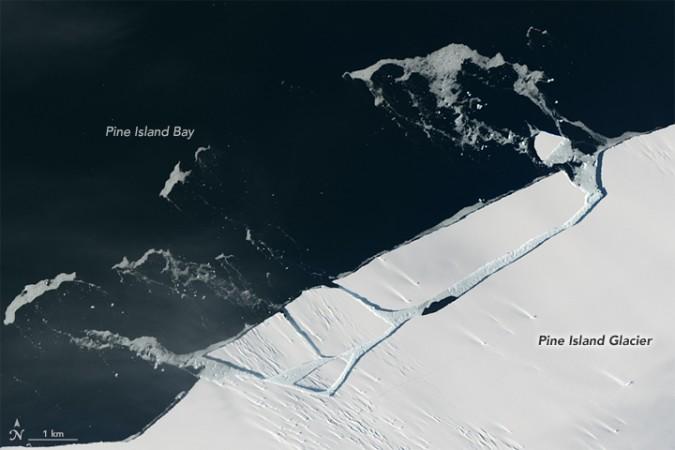
Another instance of iceberg breakage has taken place in the Antarctica's Pine Island Glacier last month where a Manhattan-sized ice block swayed away into the Antarctic waters.
Also Read: NASA: A peanut-shaped asteroid might bang Earth!
The incident took place between January 21 and 26, just like those that took place in 2014 and 2015. All of them point towards the brittleness of the ice sheets.
NASA's Moderate Resolution Imaging Spectroradiometer (MODIS) on its Terra satellite captured this happening. Compared to the 2015 breakage of the iceberg which was 583 square kilometres (225 square miles) huge, this one was 10 times smaller — approximately 59 sq km (22.7 sq mi) —according to Ian Howat, glaciologist at the Ohio State University.
"I think this event is the calving equivalent of an 'aftershock' following the much bigger event," Howat said, as per a NASA statement.
"Apparently, there are weaknesses in the ice shelf—just inland of the rift that caused the 2015 calving — that are resulting in these smaller breaks," Howat added.

The reason behind the snapping of this giant chunk of ice is a spike in the waters surrounding Antarctica, which eroded the ice shelf from within.
"Such 'rapid fire' calving does appear to be unusual for this glacier. But the phenomenon "fits into the larger picture of basal crevasses in the centre of the ice shelf being eroded by warm ocean water, causing the ice shelf to break from inside out," Howat said.
The latest iceberg breakage images have been taken by the Operational Land Imager (OLI) on Landsat 8. Pine Island is said to be one of the main glaciers which carries out the movement of the ice to the ocean from the interiors of the West Antarctic Ice Sheet.
The rifts of smaller size that remain on the Pine Island at a distance of around 10 kilometres (six miles) from the front of the ice are not evident in the images. On November 4, 2016, an image of one such rift in this region was taken during a flight of NASA's Operation IceBridge — a yearly airborne science mission. These rifts are believed to be less observable as they are expanding from the bottom of the side shelf.
According to the scientists, the near future will see more shredding of icebergs because of these rifts.

















